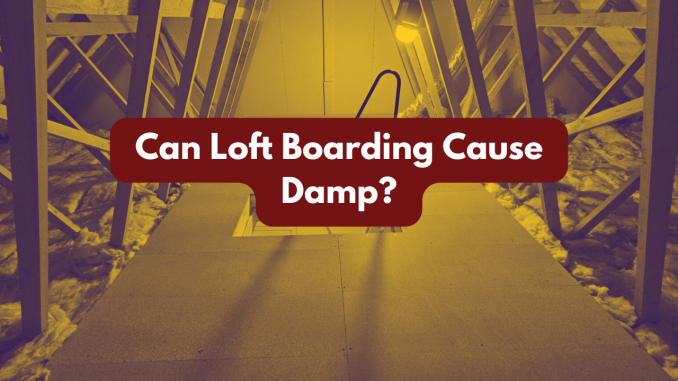
Loft boarding is a popular way to create additional storage space in a home, but many homeowners worry that it could contribute to damp problems. Understanding the potential risks and how to prevent them is essential to ensure your loft remains dry and well-ventilated. In this post, we explore whether loft boarding can cause damp, the reasons behind moisture build-up, and what steps you can take to prevent any issues.
How Can Loft Boarding Lead to Damp?
Loft boarding itself does not directly cause damp, but if it is not installed correctly, it can contribute to moisture problems. One of the primary issues occurs when boarding is placed directly over insulation, compressing it and reducing its effectiveness. This can result in cold spots and condensation build-up, increasing the risk of damp.
Another potential issue is restricted airflow. Loft spaces require good ventilation to allow moist air to escape. If boarding covers ventilation gaps or is installed too tightly against the roof, it can prevent air circulation, leading to condensation and damp patches.
Signs of Damp in a Boarded Loft
If your loft has been boarded and you are concerned about damp, there are several warning signs to look out for. One of the first indicators is condensation forming on the underside of the roof or on any exposed timber. This often occurs in colder months when warm air from the house meets cooler surfaces in the loft.
Another sign is the presence of mould or mildew, which thrives in damp environments. Check wooden beams, insulation, and stored items for any signs of mould growth. A musty smell in the loft can also be an indication that moisture is building up and that ventilation may need improving.
How to Prevent Damp When Boarding a Loft
To avoid damp issues, it is essential to install loft boarding correctly. One effective solution is to use a raised loft boarding system that allows insulation to remain effective while maintaining airflow underneath. Raised boarding prevents compression and helps keep insulation performing at its best.
Ensuring proper ventilation is another crucial step, similar to stopping damp on a wall . Check that vents or air bricks are not blocked and that there is adequate air movement throughout the loft space. If necessary, consider adding additional roof vents or soffit vents to improve circulation.
Finally, controlling humidity levels in the home can also reduce the risk of damp in the loft. Using extractor fans in bathrooms and kitchens, drying clothes outside when possible, and ensuring adequate heating throughout the house can help keep moisture levels in check.
Loft boarding can be a valuable home improvement, providing extra storage and improving accessibility. However, if installed incorrectly, it can contribute to damp problems by restricting airflow and compressing insulation. By using a raised boarding system, maintaining good ventilation, and controlling humidity in the home, you can enjoy the benefits of loft boarding without the risk of damp-related issues.

Leave a Reply